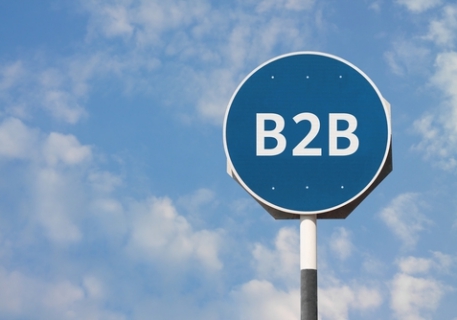B2B eCommerce: Half Trillion Dollar Opportunity

There is no doubt that the market for B2B eCommerce is one of the great under recognized cash rivers flowing through the world today—with almost $530 billion in revenue per year and growing. However, while markets are growing fast, regulations aren’t keeping up, and innovative firms are often suffocating under archaic regulations. A good market, however, can’t be kept down, and can sometimes even spawn new markets to support their needs.
With $559 Billion in revenue and growing, B2B e-commerce represents a huge opportunity for firms. Forrester Research forecasted that U.S. B2B e-commerce would reach $559 billion in 2013- more than double than the $252 B2C e-commerce revenue calculated by eMarketer. In fact, 57 percent of business buyers bought electronically at least once during 2012. Intershop’s 2013 E-commerce Report shows that almost every B2B retailer currently sells online.
As opportunities are created, however, challenges arise as complexities of meeting the new obligations proliferate. No place is this more true than in the payments arena, particularly as though B2B payments move to a global stage, as moving money across borders and currencies in a way that is secure, transparent and compliant is no easy feet, even in the age of online digital commerce.
Yet as the challenges multiply, so do players who exist to help others in the ecosystem moderate those challenges. Companies that help other organizations to surpass these archaic practices by entering the market as a new class of middle man that establishes acquiring banks in countries nations where they operate. By doing so, it does not need to create a new or innovative institutions, but instead focuses on creating new mechanisms for using existing and understood institutions that allow bureaucracy to be bypassed.
Pressures For Adoption
The infrastructure for e-commerce is widely available: Internet connections are present in almost every organization in all developed and most developing countries.
Employees are becoming more tech savvy, as technological solutions are more universally operable. Moreover, the eCommerce landscape is not alien to B2B users, most of if no all are already B2C e-commerce consumers.
On the supply side, project costs to develop a B2B site have been decreasing and many alternatives, such as B2B storefronts, have been developed. For example, eb2 teknologies, which runs specialized B2B storefront Anytime Commerce, offers its solution alternatively on a subscription or an upfront basis.
The firm calculates the average cost of an e-commerce order to be $1 vs. $10 for e-mail orders and $33 for phone orders as 45% of contact center calls are non-transactional inquiries.
Additionally, storefronts such as hybrids B2B Commerce have the ability to integrate with ERP solutions for credit check and invoicing and also to the firm’s back end. It also allows connecting with 1.5M firms present in the Ariba network.
International B2B e-commerce is increasing as communication costs decrease and freedom of commerce grows in many geographies. Benny Nachman, Credorax CEO, affirms over 30 percent of global online sales involve buyers and sellers in different countries. Marketplaces such as Alibaba in China, ThomasNet.com in US, IndiaMART in India and EC21in South Korea attract millions of users monthly.
However, the greatest pressure to adopt to B2B eCommerce models is simple demand. With eCommerce enabled, at the end of the day companies can reach out to their customers in a way that customers find desirable.
Navigating Complexity
However B2B e-commerce, while on the surface similar to its flashier cousin B2C , suffers from a unique set of complexities.
The 2012 Oracle B2B Survey revealed that 28 percent of firms have five or more decision-makers involved in their purchase process. Apart from expecting B2C features (order entry, order history, technical support information and status) B2B customers also demand specialized characteristics such as different user roles and multiple input points. Besides, the same supplier might have different catalogs, price lists, rules and discounts for different customers.
In turn, international B2B commerce has further challenges such as operating across different languages, cultures and legal, regulatory and logistical environments. Some companies provide help in establishing in different markets. For example, Launch Factory 88, a firm founded in 1998, provides entry, B2B sales and manufacturing assistance in China.
Not always evident at first, but presenting an extreme challenge, is the way international payments are made.
Since some financial institutions may decline transactions arising from high-risk countries a firm wanting to enter those markets must consider alternative ways of facilitating payments.
Or even among “mainstream players” there are simply more toll booths when transacting abroad. For example, to make payments possible in Europe acquiring bank must have a license from the Payment Services Directive established by the European Commission. As most of U.S. banks don’t have that license, they usually partner with European counterparts to carry e-business payments. Apart from higher fees this causes friction due to the need of matching different systems.
There are alternatives. Credorax operates as an acquiring bank in 27 European countries and plans to expand into the US and Japan. Because it also functions as acquiring bank, fraud analyst and payment gateway for e-commerce its customers, ISOs and retailers, have access to a single point of entry which uses only one system. At the same time, it lowers fees and reduces friction in payments while assuring that they are carried complying with local regulation.
Creodox operates in a specialized by not entirely lonely marketplace. TraxPay offers a similar service.
